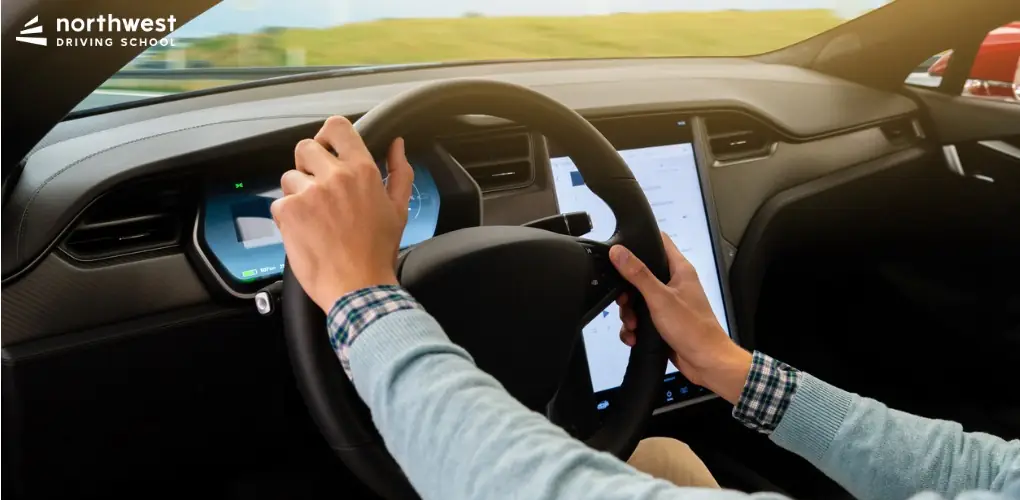- Driving School
How Does the Tesla Regenerative Braking Affect the Way You Drive?

Learning to drive a Tesla brings some exciting new features, and one of the most unique is regenerative braking. If you’re a new driver, you might wonder how this system works and how it will change your drive. Regenerative braking differs from traditional braking because it engages the electric motor to slow down the car while charging the battery simultaneously.
According to the International Energy Agency, electric car sales expanded by 40% in 2020, and Tesla remains a leader in electric vehicle sales. As more people take to EVs, knowing what regenerative braking is helps drivers adjust and enjoy smoother driving.
Read More: The Self-driving Car Of The Future Is Already Here
How Regenerative Braking Work?
As soon as the brake pedal of a conventional gas-powered car is applied, it slows the car by creating friction with the wheels via the brake pads. As such, friction generates heat and, with time, decreases the life of the brake pads. Regenerative braking works differently in Teslas and other electric vehicles.
Hit the brake, or, more precisely, take your foot off the accelerator in a Tesla, and the reverse action makes the car’s electric motor a generator. This process slows the vehicle down without using traditional brake pads and sends energy back to the battery. To put this in simple terms, it enables the vehicle to recover energy that would otherwise be lost in slowing down.
Changes in Your Driving
One of the first things you may notice while driving a Tesla with regenerative braking is how little the brake pedal is used. Most Tesla drivers drive in “one-pedal driving,” where control of both accelerating and decelerating uses just the accelerator pedal.
What is One-Pedal Driving?
When one accelerator is pressed, the car accelerates.
The car slows down when you release the accelerator due to regenerative braking.
You would use the brake pedal only during sudden stops or in instances of an emergency.
At first, this can feel strange, but most motorists soon become familiar with it. The advantage of city driving is that you don’t have to constantly switch between the accelerator and the brake, which can be easier for constant stop-and-go driving. However, getting the timing right requires some practice, especially when you need to stop quickly.
Energy Efficiency Improved
Active regenerative braking enables Teslas to use energy more efficiently, instead of wasting energy when braking, the system captures some of it and returns it to the battery. So, your Tesla will be able to go farther on the same charge compared to the charge it would have with traditional braking.
For example, regenerative braking extends the range of your car when you drive down a hill or slow down to a stop at a red light. This can make all the difference on longer trips, as you won’t be required to recharge your vehicle often.
Less Wear and Tear on Brakes
Traditional braking systems rely on brake pads and rotors, which wear down over time and must be replaced. Regenerative braking reduces friction to these components because it does most of the work of slowing the car. That means longer-lasting brakes translate to better savings due to less maintenance.
Besides, smoother stopping enabled by regenerative braking can make the ride more comfortable for the driver and passengers.
Adapting to different driving conditions
The regenerative braking system can be tweaked according to driving preference or condition. Tesla offers drivers the choice of “Standard” and “Low” settings.
Standard: This setting provides more positive regenerative braking, which means that once you release the accelerator, your car will slow down faster. It is well suited for in-city driving, where drivers must stop and go frequently.
Low: This is smoother regenerative braking, wherein the car can coast a little more when you lift your foot off the accelerator. It’s better for highway driving or a soft, gradual stop.
By adjusting the level of regenerative braking, a driver can gain more control and adapt to different driving environments.
Conclusion
Tesla’s regenerative braking makes the car more energy-efficient and changes how you drive. Regenerative braking leads to a smoother driving rhythm with one-pedal driving, improving energy use and wear on more conventional brakes. It makes driving so much easier and essentially more efficient. It takes some getting used to, but most drivers appreciate this system quickly.
Experience Tesla’s unique driving features, such as regenerative braking. Stop by Northwest Driving School today and join our Tesla Driving Program. Let our expert instructors show you how to drive an electric vehicle and utilize the advanced technology in Teslas!


